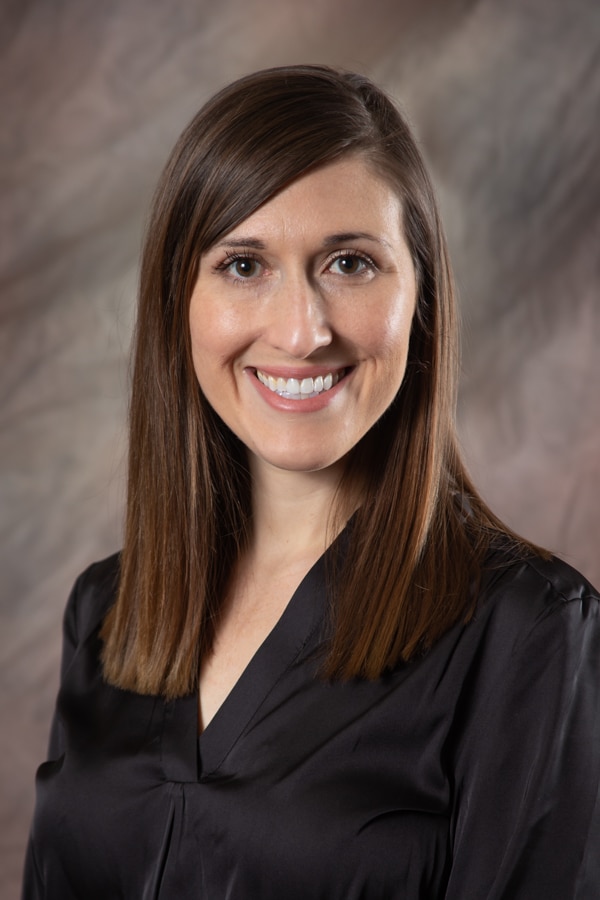 By KIRSTEN LASKEY
By KIRSTEN LASKEY
Los Alamos Daily Post
kirsten@ladailypost.com
Not one area of the community is immune to the effects of COVID-19.
During the May 19 Los Alamos County Council work session, the Council subcommittee on COVID-19 reported on various areas impacted by the virus, which include business, education, social services, philanthropic, communication and legislative.
Business
 LACDC Executive Director Patrick Sullivan
LACDC Executive Director Patrick Sullivan
Los Alamos Commerce and Development Corporation (LACDC) Executive Director Patrick Sullivan reported on the local business environment.
Attempts to get data for individual counties regarding the Federal Crisis Response Bill were unsuccessful, he said, but Sullivan did report that as of early or mid-May statewide, the three local lending institutions: Enterprise Bank and Trust, Century Bank and New Mexico Bank & Trust, had processed 2,000 payroll protection loan applications, which totaled more than $300 million.
To get a closer look at the effects of the pandemic on the local business community, Sullivan shared results of a national MainStreet survey that was conducted among local MainStreet businesses. Twenty-six responses were received, which is not a huge amount but still provide good information, Sullivan said.
When asked how COVID-19 affected their business, Sullivan said 80 percent of respondents selected loss of revenue. The next highest selection at 57 percent was additional expenses to mitigate risks such as masks and cleaning supplies. Additionally, 53 percent chose employee layoffs and closures.
Survey participants also were asked how their business revenue changed. Sullivan reported 42 percent said their revenue has decreased more than 75 percent. Next, 34 percent said it dropped 50-75 percent.
When asked if business disruption continues at the current rate, then what is the risk of closing, none of the participants selected less than one month. However, 23 percent selected two-three months, 38.5 percent chose three-five months and 23 percent selected more than five months. Sullivan said 15 percent reported it was not a concern.
“Put that in comparison to statewide and national data, our businesses here, at least the samples we have here, look to be more prepared to sustain short-term disruption than what you see on a national scale,” Sullivan said.
The survey also revealed that the top concerns for local businesses are employee welfare, making payroll and customer traffic. The most requested assistance from survey participants was penalty-free extensions for expenses such as rent, utilities, supplies and inventory. Additionally, business owners said it would be helpful to get information on financial assistance.
Sullivan also reported that business owners shared frustrations toward the Crisis Response Bill. Many felt the money awarded through the bill was not enough and was too slow in arriving. Additionally, the process to receive the money was confusing, the rules changed and the Federal Government’s guidance was very unclear. It would fall on local lending institutions’ shoulders to figure it out, he said.
On the state level, State Rep. Christine Chandler was helpful in getting answers to many businesses’ questions such as the state’s stance on which businesses could or could not be open, Sullivan said. He emphasized the importance of advocating to the Public Education Department to release a school reopening plan as quickly as possible. Many business owners and employees have concerns about childcare and what they need to do once school is back in session, Sullivan said.
He added that locally the LACDC was able to obtain personal protection equipment and make it available to local businesses at no cost. Specifically, Sullivan said the organization has 600-700 masks, boxes of gloves and five 10-gallon containers of hand sanitizer that businesses can use to refill bottles.
Sullivan added that the LACDC will assist business in being better prepared the next time a disaster visits Los Alamos.
“Part of business retention needs to really shift toward disaster preparation,” he said. “So, when we go through something like this again there’s a better plan in place; there is a financial support plan in place; there are other things that don’t have to be invented on the fly. That is a burden our organization is willing to take in terms of moving forward.”
Council Chair Sara Scott mentioned that she serves on the Mayor’s Council, a statewide group that provides feedback to the Governor on reopening the state, and the Mayor’s Council is aware of many of the concerns and issues Sullivan listed. She also thanked the LACDC for creating a list of childcare centers, their schedules for opening and their capacity to help folks in the community who need childcare.
Social Services
 Council Vice Chair Randall Ryti
Council Vice Chair Randall Ryti
Council Vice Chair Randall Ryti touched on the increased risk of domestic violence. He reported in the short term there are some efforts to help deal with the problem. Additionally, Ryti said the social services gap analysis that the County is conducting may offer some opportunities to help with that issue, for example, a resident facility for victims of domestic violence.
Councilor James Robinson touched on social isolation, particularly in the assisted living facilities. Isolation is not only affecting residents but also staff, he said. As far as what the County can do, Robinson said it is limited because senior and nursing facilities are governed by the Federal Government and the state governs assisted living facilities, but some creative ideas have been offered. For instance, local facilities are hosting hallway bingo and the County is working to open some of its trails at certain times exclusively for seniors.
Education
 Councilor Katrina Martin
Councilor Katrina Martin
As far as schools, Councilor Katrina Martin shared her knowledge of what is being discussed for Los Alamos Public Schools.
“We’re still kind of waiting and seeing; the schools haven’t decided anything for sure,” Martin said. “A lot of ideas are being thrown out. One idea would be a half day where half the students come in the morning and half come in the afternoon. It may be … an A/B schedule … my understanding of the path forward is a lot of community outreach.”
She added that there are a lot of things to consider such as what a kindergarten class would look like practicing all the different safety guidelines and how social distancing can be enforced on a playground.
Communication
 Council Chair Sara Scott
Council Chair Sara Scott
Scott said a website has been created, which can be accessed from a button on the County’s homepage. Information on the site has grown exponentially, she said. The County’s helpline, 505.662.8333, also is being used as a one-stop resource on how to get and give help.
There is more to do; Scott said different avenues are being considered on how to broadcast information such as creating a bullet list and posting it on social media, purchasing social media ads and printing banners.
“Overall, we just need to keep communicating but we do worry a little bit about information overload,” she said. “There’s a lot out there and things are changing rapidly ….”
Still, Scott said communication is important.
“Communication is critical because we can have great resources and tools for our community but if folks don’t know where to find them, they’re not going to help,” she said.
Philanthropic
 Councilor David Izraelevitz reported nonprofits are seeing challenges. For instance, Los Alamos Family Council had seen more demand for its services and LA Cares increased its food distribution by 10 percent. After talking to Self Help, Izraelevitz said they are seeing “the calm before the storm.” He explained that while the Department of Public Utilities is not disconnecting utilities services, property owners are not foreclosing or evicting and people are prioritizing expenses, that can only last so long.
Councilor David Izraelevitz reported nonprofits are seeing challenges. For instance, Los Alamos Family Council had seen more demand for its services and LA Cares increased its food distribution by 10 percent. After talking to Self Help, Izraelevitz said they are seeing “the calm before the storm.” He explained that while the Department of Public Utilities is not disconnecting utilities services, property owners are not foreclosing or evicting and people are prioritizing expenses, that can only last so long.
“Because all of these assistance programs are limited term … and this is a long-term game … I think it’s very prudent for all of these organizations that have been judicious and preparing for the later, larger needs,” Izraelevitz said.
There is good news, however. Through an organization in Santa Fe, locals have rallied together and collected needed items to be given to the Navajo Nation, he said. Additionally, Los Alamos Piecemakers Quilt Guild turned on their sewing machines and produced 2,300 masks for the community. As for the Los Alamos Community Foundation, Izraelevitz said it raised more than $60,000 and awarded 20 grants to organizations not just in Los Alamos but also Rio Arriba County. Applications are now being accepted for more grants.
“There’s been a lot of volunteer energy; it’s been very nice to see,” Izraelevitz said. “It’s helpful for the recipients and for us that there is something positive for us to do.”
He added, “It’s going to be a long haul so we can expect to see these needs continue for a long time.”
Legislative
 Council Pete Sheehey
Council Pete Sheehey
Councilor Pete Sheehey said the National Association of Counties is extremely active lobbying on the federal level. He said there have been several big federal bills that have been passed to date. For a small business, or those with up to 500 employees, Sheehey said they can get two weeks of sick leave and up to 10 additional weeks for childcare leave, which can be paid for out of the social security tax that businesses are obligated to pay.
He added that the Economic Injury Disaster Loans are tied up, but some funds are distributed, including $10,000 grants. Sheehey also touched on the CARES Act, which after a frustrating start, is finally benefiting local businesses.
The next big bill that the National Association of Counties is lobbying for, he said, is $100 billion to directly distribute to counties based on population. While passage of this bill is coming more and more politicized and troubling, Sheehey said if the bill did pass it includes direct aid to counties.
“That may be our opportunity to get money that we can make (into) direct, appropriate grants to individuals or small businesses,” he said.
Sheehey pointed out that New Mexico received $1 billion in direct aid from the CARES Act but he doubted that would reach the counties because of the state’s budget deficit due to the drop in oil and gas prices.

